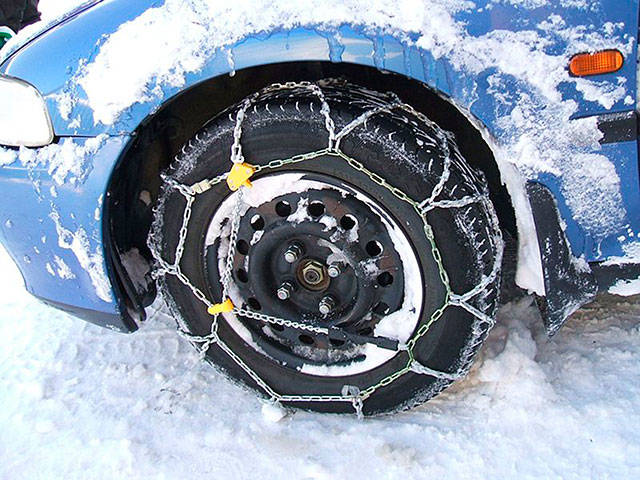The following is a press release from the Washington State Department of Transportation:
‘Tis the time of year when holiday lights go up, Mariah Carey lets us know what she wants for Christmas, and snow falls on our mountain passes. And while snow can make for a beautiful sight, it can also make for challenging driving conditions.
Unfortunately, many drivers crossing snowy mountain passes either don’t carry chains despite it being required by law, or don’t put them on. For the past several years, more than half of the closures on I-90 Snoqualmie Pass have been due to vehicles ignoring a chain-up requirement and then getting into collisions and blocking lanes.
This winter, the Washington State Department of Transportation is working with the Washington State Patrol, which will be enforcing chain requirements during winter storms and inclement weather on Snoqualmie Pass.
If you don’t chain-up, you will have to pay up. Ignoring the chain requirements could cost you $500.
Here are some other requirements WSDOT wants to travellers of:
- Vehicles weighing 10,000 pounds or greater – including some large SUVs and RVs – must install chains when traction tires are required.
- All vehicles, except 4WD and AWD, must put on chains when tire chains are required. However, 4WD and AWD vehicles still need to carry chains in order to proceed across the pass.
- All vehicles including 4WD and AWD need to put on chains when chains are required on ALL vehicles.
What if your car has smaller wheel wells and can’t take chains? Or the manufacturer doesn’t recommend chains? Well, you are in luck — the WSP has compiled a list of approved alternatives you will need to use in place of chains. Not every “tire sock” chain alternative is approved as meeting our state standards, so check the WSP list before you make a purchase. As always we have a great online toolkit to help prepare you for travel this winter as well as our communications tools to use before you head out the door or while you’re on the road:
- Download the WSDOT mobile app.
- Follow our regional and pass accounts on Twitter, the agency’s Facebook siteand online travel alerts.
- Sign upfor email and/or text updates about road conditions – including Snoqualmie Pass delay text alerts.
- Check current traction and chain requirementsfor mountain passes, which are also available on highway-advisory signs and highway-advisory radio and by calling 511.
- Preset your radio to 530 AM and 1610 AM for our traffic information stations.


